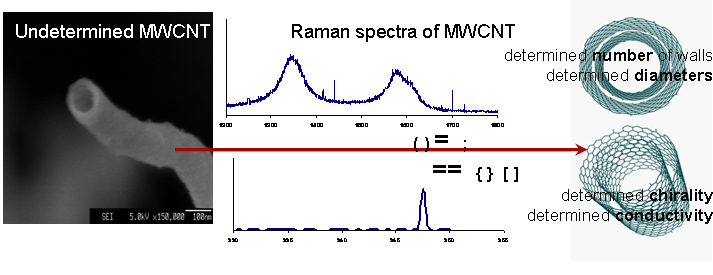Status
Completed
Period
1-11 December 2020
Applicant
Viktor Andonovikj
Home Institution
Jozef Stefan Institute, Ljubljana, Slovenia
Host Contact
Prof. Aleksandar Dimitrov
Host Institution
Faculty of Technology and Metallurgy, St. Cyril and Methodious University, Skopje, North Macedonia
Aim of the mission
In the framework of this STSM visit, Prof. Dimitrov and I had planned and managed to elaborate recent results in machine learning and decision support systems in analyzing data and making predictions with focus to carbon nanomaterials.
Our primary focus was set on use of most recent data relevant to topological indices of experimentally obtained Multi-wall Carbon Nanotubes (MWCNTs), as well as of experimentally obtained graphene samples.
The secondary focus we had set was working on improving the model of determining the number of layers of graphene by XRD data, using Python programming language and its libraries: sci-kit learn, seaborn, and pandas.
Our motivation and purpose was to obtain new results and broaden the research field with regard to recent results.
This STSM was planned as a whole of several steps, based on the latest information about the present situation in the field:
– As a head of Department, Prof. Aleksandar Dimitrov introduced me to the Laboratory for Nanomaterials and Nanotechnologies, which was necessary for the planned activities, and to the production procedure of carbon nanomaterials, which was within our research focus. During my STSM an appropriate computer software (source-code editor) for calculation, visualization and programming was available.
– With regard to the carbon nanotubes, the characterization was performed using Raman spectroscopy data within the low frequency region as well as the region 1200-1800 cm-1, combined with Python programming with regard to precise (m,n) indices assignment to each of the concentric walls. The latter, up to date, is an extremely challenging task for MWCNTs. Our main goal within this step was to determine the topological indices for nanotubes that have more than one layer (wall), for each of the walls in the structure.
– With regard to graphene, we used XRD data of the samples and using Python programming we approached to characterization. We also managed to precisely specify the problems related to determining topological indices of each of the produced sample.
Summary of the Results
– A mutual model for characterization of the walls of the MWCNTs was developed, which would enable determining their topological indices.
– With regard to the carbon nanotubes, a successful approach had enabled complete molecular structure characterization of the multiwall carbon nanotubes’ samples, experimentally produced. Precise (m,n) assignment had been made for each wall, thus providing full insight to the nanotubes’ properties, particularly relevant to their conductive nature. The (m,n) assignment have also provided complete necessary information for calculating various distance-based topological indices of the MWCNTs: Wiener, Harary, Balaban index etc., which are related to properties of the experimentally obtained molecules., and doing some programming (in Python). Our main goal was to determine the topological indices for nanotubes that have more than one layer (wall), for each of the walls in the structure.
– The steps of improving the model for determining the number of layers within the graphene samples were defined, using XRD data analysis, Python
programming, thus making highly acceptable predictions. Such results would enable determining the topological indices of the experimentally obtained molecules, and we continue working on this problem.
Dissemination
A long-term plan to define the steps and directions of our work after the STSM has been made, in order to round up and finalize what we had started, but had not finish during my stay at the faculty. Some of the work is prepared as a manuscript to present the theoretical and experimental setup of our work, discussions, results and applications. The results are ready to be presented at conferences, as a continuation and enhancement of our latest work within this COST Action. This collaboration we expect to be highly applicable, hence it will give a significant contribution in practice too, particularly in the field of applied mathematics and mathematical modeling.

